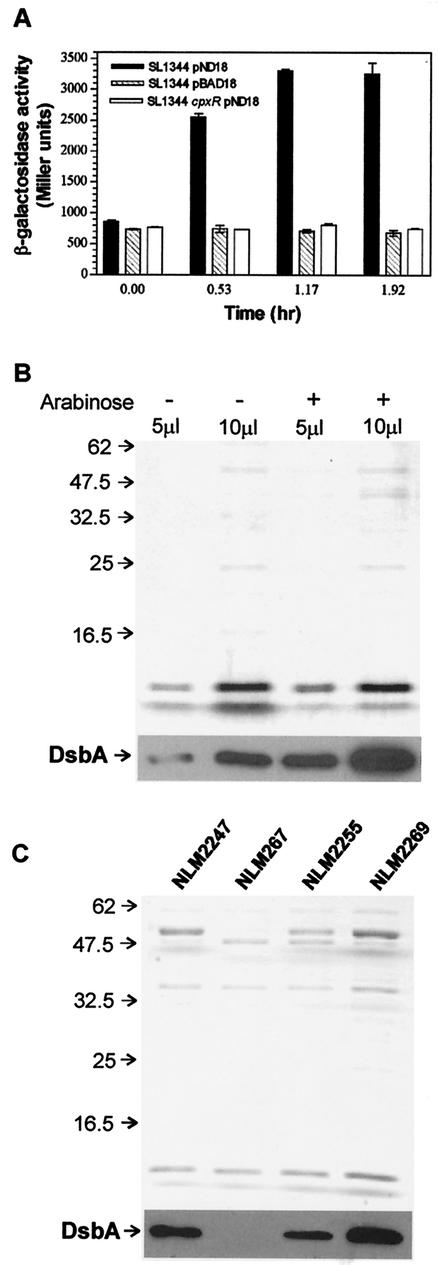FIG. 3.
Effects of inducing NlpE on the rdoA promoter and DsbA protein levels. (A) A comparison of promoter activity of rdoA with or without induction of the Cpx response via expression of NlpE by comparing rdoA::lacZ (pPrdoA) in cells containing an arabinose-inducible nlpE (pND18) or control (pBAD18) vector. The cpxR::Ω strain is included to demonstrate that the effect on the rdoA promoter is mediated by the Cpx pathway. Cells were grown to an OD600 of 0.3 in the presence of 0.2% glucose. The cultures were then split, and 0.4% arabinose was added to one. Cultures were assayed for β-galactosidase activity at the time of adding arabinose (t = 0) and several times later. (B) Upper panel, protein gel of periplasmic extracts from cells grown under NlpE-uninduced (−) and induced (+) conditions at two loading concentrations (5 and 10 μl) stained with Coomassie blue to indicate total protein levels (DsbA is not visible on this gel); lower panel, Western immunoblot developed with anti-DsbA antiserum. DsbA is more abundant when NlpE is overexpressed. (C) Upper panel, protein gel of periplasmic extracts from the wild-type strain (NLM2247), dsbA null strain (NLM267), rdoA null strain (NLM2255), and rdoA null strain containing a copy of rdoA in trans (NLM2269) grown under NlpE-inducing conditions (all strains contain pDN18 and were grown in the presence of arabinose) stained with Coomassie blue to indicate total protein levels (DsbA is not visible); lower panel, Western immunoblot developed with anti-DsbA antiserum. Inducing NlpE does not increase the DsbA levels to that of the wild type (NLM2247) in the rdoA null (NLM2255) strain. The wild-type phenotype is regained when rdoA is provided in trans (NLM2269).

